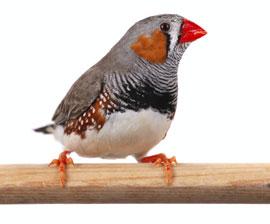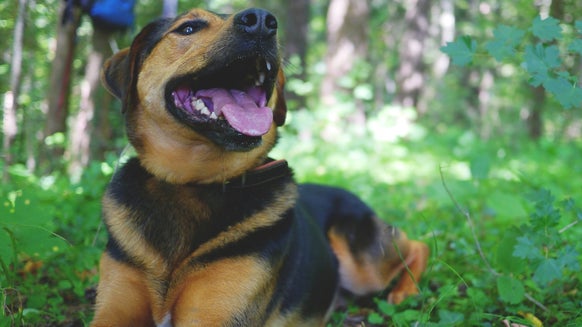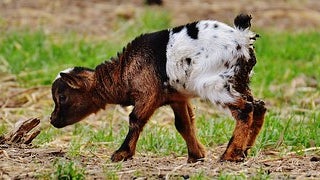ANIMALS
Zebra Finch and Canary Care

Our friends at The Raystede Centre for Animal Welfare have put together some essential care tips for Zebra Finches and Canaries.
Every animal has the freedom to a suitable place to live
Your Canary or zebra finch must live in a cage (or ideally an aviary), that is big enough for it to sprea  d its wing span fully-ideally it should be wide enough to have double its wing span.
d its wing span fully-ideally it should be wide enough to have double its wing span.- Research aviary construction if this is an option, consider safety, security comfort and make it rodent proof.
- If you don't have use of an aviary, consider letting your canary or zebra finch out for some flying time in your house, ensuring that it is secure and safe for the bird to fly in. Ensure that all windows and doors are closed when flying them in your house and all hazards removed.
- Ensure the cage or aviary is made with a safe metal (stainless steel ideally)-the spacing of the gaps need to be no more than 12mm.
- Canaries or zebra finches need access to natural sunlight and to be free from draughts and the cold. In the UK as sunlight is not so frequent, you could consider getting a UVA/B lighting kit for indoor use. In an aviary to maintain warmth consider using infra red heat bulbs or tube heating. A good electrician is advisable for this project. Don’t allow direct contact with the equipment, think of their safety and their small size.
They must be out of any draughts-cold draughts can be seriously damaging to their health. Give them time outside, in their cage when the weather permits. Ensure part of their cage is covered for protection offering a place to hide away from any predators and keep out of the elements. Never leave them unattended outside and make sure the cage is sited somewhere safe and secure. Ensure there are sufficient perches in their cages of varying widths and lengths. In colder months you could cover the cage at night with a thick blanket. Offer a suitable roosting box, but avoid a nest box. zebra finch
Every animal has the freedom to suitable food and water
Canary or zebra finch food needs to be fresh, mould free and kept in secure containers to keep rodents out. Their natural diet consists of fresh seed, certain fruits and greens. - Fresh, clean water must always be on offer for your canary or zebra finch. Ensure it is not too deep to prevent drowning and that it doesn't freeze in the colder months.
- Ensure you know which foods are poisonous for your bird (for example, mushrooms, tomato, chocolate, salty food, rhubarb and avocado, apple seeds and onions).
- Zebra finches live largely on spray millet and grass seed-a good general mix for finches would be sufficient-seek expert advice on what to feed your finch. Sprouted seeds can be enjoyed, such as broccoli cress and some weeds such as dandelion and chickweed. Ensure they are not collected by roadsides or gardens where pets defecate and are always washed before use.
- Canaries like green broccoli florets are popular.
- Both finches and canaries husk the seeds and care must be taken to remove the husks from their bowls as they can build up a layer over the food and the birds cannot reach the untouched seeds below and can potentially starve.
- Add vitamins and minerals to their diet; cuttle fish bone and grit are beneficial too.
Every animal has the freedom to behave normally
- All pet birds need to be able to exercise and spread their wings.
- Ensure your bird has regular exercise and mental stimulation.
- Canaries or zebra finches tend to ignore toys but non toxic plants, shredded paper or twigs can be stimulating.
- They must have access to a bird bath, and carers must ensure this is kept clean and free from debris or bird faeces. In the wild, canaries like to roll in the dew dampened grass.
Every animal has the freedom to be with other animals or alone - whatever suits that species
- Pet canaries do not require companionship; the canary species is territorial, not social. Though a male and female can get on, one will always be more dominant and they would need to be separated during the spring/summer. In a larger aviary, though, more can be kept together, always with a ratio of more hens to cock birds, for risk of fighting.
- Finches are bright, social and gregarious and need companionship in their environment, though it’s advisable to more females than males in an aviary to avoid aggression.
- Mixing canaries with social finches is fine, but avoid budgies and definitely not love birds.
- If you own a finch or canary by itself, ensure it has enough human interaction and mental stimulation. It is not advisable to keep a single finch alone.
Every animal has the freedom to be protected from pain, injury, suffering and disease
- Be extra vigilant in noticing any changes of behaviour of your canary or zebra finch as this could be a sign that it is unwell and needs to see a specialist avian vet.
- Check any variations in the faeces quality, this could indicate disease.
- If they are sitting on the cage or aviary floor that is usually a sign that something is not right.
- Keep an eye on any changes in appearances or eating habits, such as fluffed up appearance, weight loss, dirty vent, sleeping a lot.
- Try and find a specialist avian vet for your canary or zebra finch as birds hide illness until often it is too late, a quick diagnosis from an expert may make all the difference.
The Raystede Centre for Animal Welfare rescue, rehome and provide sanctuary for more than 2,000 animals each year. You can find more about the organisation and the work they do on their website.








